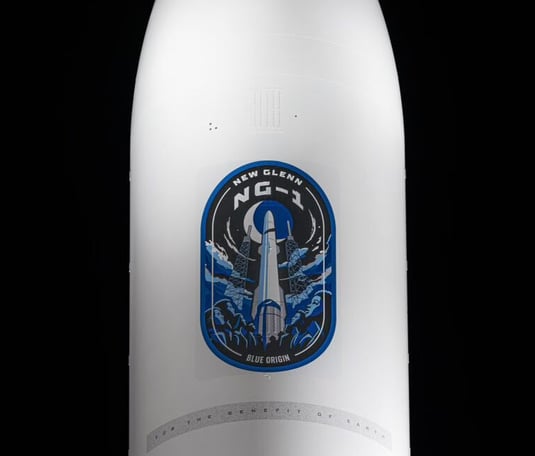New Glenn rocket is on the launch pad and waiting for fair weather to come and land.
The New Glenn rocket has some interesting artwork on the fairing of it.
1/12/20252 min read


Which, as it so often happens in the last days before the start of a new rocket, is ultimately boiling down to the weather. Consequently, Blue Origin is only waiting for a moment when there will be no clouds in the sky and no waves in the sea to launch its huge New Glenn starship from Florida. When the company recently this week completed integration of the rocket, and rolled the super heavy lift rocket to the launch site on Cape Canaveral, weather became the new topic of concern. The weather at Cape Canaveral Space Force Base has been fair during the early morning launch opportunities afforded to the rocket, but there have been challenges in seawater.
This is due to the first stage of the New Glenn rocket that Blue Origin plans to reuse, and previous sea states in the Atlantic Ocean have not been conducive to a first attempt at catching of the first stage booster by a drone ship. The company has already waived one launch attempt set for 1 am ET (06:It is at 00 UTC on the Friday, January 10 for this year. Conditions are relatively better now but on Saturday evening the company’s launch officialsaborted a second attempt scheduled for 1 am ET on Sunday.
Viasat’s new launch time is 1 am ET on Monday the 13th, which should be better sea states for the new location. The launch window is three hours long. This will be a Web cast of proceedings of the company starting one hour before the lift off through this link.
The specifics of the New Glenn rocket were unveiled by Blue Origin on Saturday, in form of a mission timeline revealing that it will take hours to fuel the rocket. Hydrogen loading in the second stage will commence 4.5 hours before the flight while the booster, second stage liquid oxygen will begin 4 hours before takeoff time, finally methane for booster stage 3.5 hours before launch. Fueling should be done an hour before the launch of the spacecraft.
But in a nominal mission, seven engines of booster stage BE-4, which has flown through two test flights of the Vulcan rocket by United Launch Alliance, will burn liquid methane for 3 min 10 sec. If everything works well with the booster stage the second stage and it will trigger a 28second burn to perform a controlled re-entry to the earth’s atmosphere, another burn will be done before the space craft comes to a landing at 9 minutes and 28seconds into the flight.
True as this is the first flight of New Glenn, there is a possibility something could go wrong with the booster stage or upper stage while in flight though Blue Origin has ensured a thoroughly clean mission. The first main difficulty, nonetheless, is to successfully land the first stage during the first flight. It appears they will not succeed, but it is not out of question. “Our goal is to go to space,” said Blue Origin’s chief executive, Dave Limp this week. Any more than this is a luxury, to say the least. It is daring to hope for a booster landing on water – but that’s our plan. In any case, there will be much to be learned.”
Concerning the second stage, two burns are expected to occur within one hour of the mission. The rocket is also taking a Blue Ring pathfinder, a model version of the firm’s in-space vehicle that will generate power and offer delivery or final mile services to other payloads.
/ It calls for a dramatic landing: ‘Landing our booster offshore is challenging – we decided to make it more difficult!’
Credit: Blue Origin
Insights
Stay updated on technology and AI advancements.
info@tracertacz.com
© 2024. All rights reserved.
